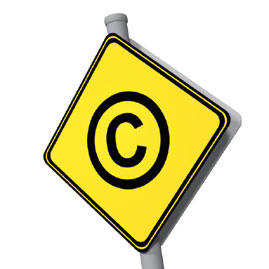Top 10 Ways 21st-Century Schools Can Protect Themselves from Copyright Violation

Educators as well as students must have a clear understanding of copyright regulations so that not only can they avoid committing violations themselves, they can also protect their own work from being used out of context unlawfully. Here are some of the chief ways that 21st-century schools, educators, and students can safeguard themselves.
10. Be mindful that copyright regulations apply to various media. “As a passive reminder that copyright laws apply to virtually all copying,” says expert on copyright law and author Carol Simpson, “get stickers similar to those that you find on copy machines and put them on all equipment capable of making copies.”
9. When using video, get permission or licenses. “One of the most frequent causes of cease-and-desist letters to schools is showing entertainment films that are not tied to the curriculum,” Simpson says. “Such showings require permission from the copyright owner or payment of royalties because they are nonexempt public performances.”
8. If it’s a consumable— that is, something that is destroyed or altered by being used for its intended purpose (and thus is intended for a single use only)— don’t copy it. Schools often get in trouble when teachers make photocopies of tear-out sheets in student handbooks.
7. Lead by example. Instructors have to cite the sources of the materials they use in handouts and be sure they have the necessary permissions when creating course packets, in order to model proper behavior for students.
6. Just because it’s easily accessible doesn’t mean you can use it freely. Material on the Internet is not exempt from copyright policies.
5. Student copyright should not be overlooked. Schools should put the same effort into protecting students’ work that they do into not committing violations with more-commercial resources, such as textbooks and entertainment.
Tools and ideas to transform education. Sign up below.
4. Unpublished work requires citation. Even if work has not been formally published, it still has to be cited when referenced in other work.
3. Utilize your resources. Use software programs that check the originality of students’ work, such as Turnitin.
2. Policies must be in place. Without the proper policies and procedures for punishing copyright offenses in position, the whole concept of copyright becomes moot. Educators and students alike have to understand copyright policy and the ramifications of violating it.
1. Teach students the importance of academic honesty. If students understand the fundamentals of academic integrity, including the value of producing original work, obeying copyright policies will become second nature to them.
—Renee Bangerter is a professor of English at Saddleback College,
Mission Viejo, CA.
